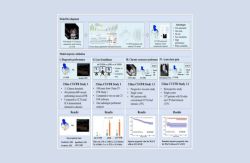This technique allows measuring blood flow to the heart muscle with an unprecedented spatial resolution and without any ionizing radiation. Multi-centre data has already suggested a superiority of this technique in comparison to methods now used on a routine basis. New data presented during the meeting further expands its role, suggesting that new techniques with faster imaging will further improve spatial resolution and enhance diagnostic accuracy.
Magnetic resonance perfusion imaging, for example, may also be used in patients after bypass surgery. This is due to its ability to discriminate areas with scar from complex flow patterns as found after surgery. Similarly, the high spatial resolution allows detecting remaining areas of reduced blood flow after therapy. These new areas for using magnetic resonance perfusion imaging expand the indications of this relatively young technique and lead to a reconsideration of the application of magnetic resonance imaging mainly as a second line technique.






















